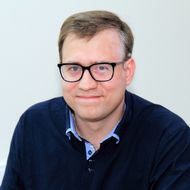HSE Scientists Have Developed a New Model of Electric Double Layer

This new model accounts for a wide range of ion-electrode interactions and predicts a device's ability to store electric charge. The model's theoretical predictions align with the experimental results. Data on the behaviour of the electric double layer (EDL) can aid in the development of more efficient supercapacitors for portable electronics and electric vehicles. The study has been published in ChemPhysChem.
Many devices store energy for future use, with batteries being among the most well-known examples. They can consistently release energy, maintaining steady power output regardless of existing conditions or load, until fully discharged.
In contrast, supercapacitors deliver power in pulses rather than in a continuous flow. If a battery can be likened to a jar that gradually stores energy for long-term use, then a supercapacitor is like a bucket that can be filled and emptied rapidly. This means that a supercapacitor can store energy for a short duration and release it instantly in a large burst.
The power of a supercapacitor depends on its internal resistance, which is notably high. This enables the supercapacitor to operate with very high currents, almost similar to a short circuit. Such a system is helpful when a quick, powerful charge is needed, and it is used in cars, emergency power systems, and compact devices. This effect is made possible by the accumulation of energy in the supercapacitor through an electric double layer (EDL).
The ability of any capacitor to store charge is determined by the area of its plates, the distance between them, and the type of dielectric material used. Since the electrolyte layer between the plates of a supercapacitor is only a few nanometres thick, and the porous coating on the electrodes provides a large surface area, supercapacitors can significantly surpass traditional capacitors in terms of stored energy.

In real-world conditions, the electric double layer is influenced by chemical interactions occurring at the quantum level. Therefore, it is essential to study both the properties of the electric double layer and the factors that influence it to improve the efficiency of electrical devices.
Scientists at HSE MIEM and the Semenov Research Centre of Chemical Physics have developed a model to describe the electric double layer at the interface between an electrode and an electrolyte solution, using a modified Poisson-Boltzmann equation for calculations. The model considers specific interactions between ions and with surrounding water molecules, the impact of an electric field on the dielectric properties of water, and the limited space available for ions at the electrode surface. This enabled a detailed description of the differential electrical capacitance profiles, measuring how effectively the EDL can accumulate charge as the voltage changes. The higher the differential capacitance, the more charge the layer can hold with small voltage changes.
The study examined aqueous solutions of sodium perchlorate (NaClO₄) and potassium hexafluorophosphate (KPF₆) at the interface with a silver electrode. The resulting model successfully predicted the structure of the electric double layer, providing insights into the capacitance behaviour at various ionic solution concentrations. An important achievement has been the successful application of the model to mixtures of the said electrolytes, demonstrating its versatility and suitability for predicting the behaviour of complex electrochemical systems.
'Our theoretical predictions perfectly match the experimental data. This is important because quantifying differential electrical capacitance during an experiment is not trivial and requires meticulous, time-consuming procedures,' comments Yury Budkov, Leading Research Fellow at the Laboratory for Computational Physics of MIEM HSE and one of the authors of the paper. 'This model will enable the prediction of differential electrical capacitance behaviour in conditions where obtaining experimental data is difficult or impossible.'
This is the first in a series of studies aimed at developing a comprehensive theory of the electric double layer at the metal-electrolyte interface as it relates to real-world systems. In the future, the authors plan to extend the model to include systems with stronger ion-electrode interactions, which are the most prevalent ones.
'Such a model will be able to account for additional factors that influence the operation of modern electrochemical devices. This is important for the development of new supercapacitors that can be utilised in a range of devices, from portable electronics to electric vehicles,' according to Yury Budkov.
See also:
Internal Clock: How Heart Rate and Emotions Shape Our Perception of Time
Our perception of time depends on heart rate—this is the conclusion reached by neuroscientists at HSE University. In their experiment, volunteers watched short videos designed to evoke specific emotions and estimated each video's duration, while researchers recorded their heart activity using ECG. The study found that the slower a participant's heart rate, the shorter they perceived the video to be—especially when watching unpleasant content. The study has been published in Frontiers in Psychology.
‘It Was Interesting to See How Our Chinese Colleagues Work’: HSE Researchers Take Part in Hefei Summer School
This summer, Diana Sukhoverkhova, Daria Mazur, and David Kagramanyan, research assistants at the MIEM HSE Laboratory for Computational Physics, spent five weeks in China. At the Future Scientist Exchange Program (FuSEP) summer school in Hefei, they worked in new fields of science together with their Chinese colleagues. HSE's promising scientists spoke to the HSE News Service about their intense and productive time in China.
Scientists Identify Personality Traits That Help Schoolchildren Succeed Academically
Economists from HSE University and the Southern Federal University have found that personality traits such as conscientiousness and open-mindedness help schoolchildren improve their academic performance. The study, conducted across seven countries, was the first large-scale international analysis of the impact of character traits on the academic achievement of 10 and 15-year-olds. The findings have been published in the International Journal of Educational Research.
HSE Scientists Reveal How Disrupted Brain Connectivity Affects Cognitive and Social Behaviour in Children with Autism
An international team of scientists, including researchers from the HSE Centre for Language and Brain, has for the first time studied the connectivity between the brain's sensorimotor and cognitive control networks in children with autism. Using fMRI data, the researchers found that connections within the cognitive control network (responsible for attention and inhibitory control) are weakened, while connections between this network and the sensorimotor network (responsible for movement and sensory processing) are, by contrast, excessively strong. These features manifest as difficulties in social interaction and behavioural regulation in children. The study has been published in Brain Imaging and Behavior.
Similar Comprehension, Different Reading: How Native Language Affects Reading in English as a Second Language
Researchers from the MECO international project, including experts from the HSE Centre for Language and Brain, have developed a tool for analysing data on English text reading by native speakers of more than 19 languages. In a large-scale experiment involving over 1,200 people, researchers recorded participants’ eye movements as they silently read the same English texts and then assessed their level of comprehension. The results showed that even when comprehension levels were the same, the reading process—such as gaze fixations, rereading, and word skipping—varied depending on the reader's native language and their English proficiency. The study has been published in Studies in Second Language Acquisition.
Mortgage and Demography: HSE Scientists Reveal How Mortgage Debt Shapes Family Priorities
Having a mortgage increases the likelihood that a Russian family will plan to have a child within the next three years by 39 percentage points. This is the conclusion of a study by Prof. Elena Vakulenko and doctoral student Rufina Evgrafova from the HSE Faculty of Economic Sciences. The authors emphasise that this effect is most pronounced among women, people under 36, and those without children. The study findings have been published in Voprosy Ekonomiki.
Scientists Discover How Correlated Disorder Boosts Superconductivity
Superconductivity is a unique state of matter in which electric current flows without any energy loss. In materials with defects, it typically emerges at very low temperatures and develops in several stages. An international team of scientists, including physicists from HSE MIEM, has demonstrated that when defects within a material are arranged in a specific pattern rather than randomly, superconductivity can occur at a higher temperature and extend throughout the entire material. This discovery could help develop superconductors that operate without the need for extreme cooling. The study has been published in Physical Review B.
Scientists Develop New Method to Detect Motor Disorders Using 3D Objects
Researchers at HSE University have developed a new methodological approach to studying motor planning and execution. By using 3D-printed objects and an infrared tracking system, they demonstrated that the brain initiates the planning process even before movement begins. This approach may eventually aid in the assessment and treatment of patients with neurodegenerative diseases such as Parkinson’s. The paper has been published in Frontiers in Human Neuroscience.
Civic Identity Helps Russians Maintain Mental Health During Sanctions
Researchers at HSE University have found that identifying with one’s country can support psychological coping during difficult times, particularly when individuals reframe the situation or draw on spiritual and cultural values. Reframing in particular can help alleviate symptoms of depression. The study has been published in Journal of Community Psychology.
Scientists Clarify How the Brain Memorises and Recalls Information
An international team, including scientists from HSE University, has demonstrated for the first time that the anterior and posterior portions of the human hippocampus have distinct roles in associative memory. Using stereo-EEG recordings, the researchers found that the rostral (anterior) portion of the human hippocampus is activated during encoding and object recognition, while the caudal (posterior) portion is involved in associative recall, restoring connections between the object and its context. These findings contribute to our understanding of the structure of human memory and may inform clinical practice. A paper with the study findings has been published in Frontiers in Human Neuroscience.



